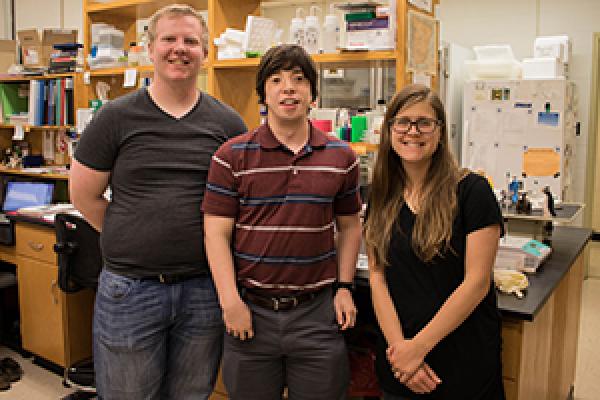The New Face of STEM Research: Diverse Students, Shared Experiences

It is no secret that achieving diversity is an ongoing challenge in STEM (Science, Technology, Engineering and Mathematics) fields. Since 1987, the National Science Foundation has sponsored the annual Research Experience for Undergraduates (REU) program, supporting underrepresented minority students in STEM and institutions offering limited research opportunities. Top universities compete to host these REUs, including Ohio State, which has been a host since 2006, established by molecular geneticist Amanda Simcox and biochemist Venkat Gopalan.
The program is now led by molecular geneticist Susan Cole and biochemist Jane Jackman, who have put their innovative stamp on Ohio State’s program, investigating every possibility to expand opportunities and widen the pipeline. Last year, they sought and received additional funding to support undergraduates from the National Technical Institute for the Deaf at Rochester Institute of Technology (RIT/NTID), becoming one of only a few universities to engage deaf students in an REU program.
They were inspired by Melody “Pepsi” Holmquist, a gifted, energetic Ohio State biochemistry graduate student. An alumna of the RIT/NTID, Holmquist is one new face of research who will not be defined or limited by her deafness.
Nor will undergraduates Mark Gjestvang and Carter Henry, who successfully competed with 434 students for two of 12 REU slots in mentoring labs at Ohio State. Over the summer, Henry worked in Cole’s lab; Gjestvang in biochemist James Cowan’s, along with American Sign Language interpreters from Ohio State’s Student Life Disability Services, which provides services to ensure equal access to education and student life.
Participating students, mentored by biochemists, molecular geneticists, microbiologists and biophysicists, did authentic, high-level research on diverse leading-edge topics, from HIV to yeast tRNAs; zebrafish to corn.
“The central experience of any REU program is actually doing research; we place every student in a mentoring lab where they conduct independent research to discover new things,” said Cole.
And discover new things they did.
“This program really gets your foot in the door at the professional level,” said Henry. “Before this experience I had no idea of all the techniques that I’m learning here.”
“Being able to experiment with real scientific instruments lets you learn and practice different skill sets,” said Gjestvang. “You also get a taste of different kinds of research, such as industry, or academic research.”
Holmquist spent a lot of time in this summer’s mentoring labs and saw how well they work. “The REU is a great training program that prepares students for actual, future scientific careers,” said Holmquist. “It really gives you an edge, so you don’t have to jump right into a graduate program and try to pick up skills as you go along — this gives you experience first, then you can hone your skills.”
Matthew Lynn, Ohio State alumnus (chemistry) and current RIT/NTID Chair of the Department of Science and Mathematics remembers Holmquist well. “Pepsi really was the driving force that helped make this summer experience possible for Mark Gjestvang and Carter Henry,” said Lynn. “We were thrilled for Mark and Carter to have the opportunity to participate in this REU experience.”
Lynn, who visited the students in their research labs in late July, was pleased to see how well they were doing. “This will put them in a good position for graduate school and give them confidence in the roles associated with a scientific career,” said Lynn.
Cole and Jackman are dedicated to giving all students confidence and competence to explore careers in science. In 2016, with help from Ohio State’s Writing Center they added the first-of-its-kind, science-writing component to their REU program. “Scientists have to learn how to make a case for their research, not only to win grants, but to engage the public,” said Cole. “Learning to craft effective messages for a variety of audiences is built into the nine-week program. We urge students to think about ‘Big Picture Science’ and develop a stronger grasp of ‘Why is this important?’”
“We are very interested in continuing to build diversity in our graduate programs at Ohio State, and view our efforts with the REU as really moving us toward that goal,” Jackman said.
Ohio State is one of just a few universities that support deaf students through @NSF’s Research Experience for Undergraduates program. #ASCDaily
